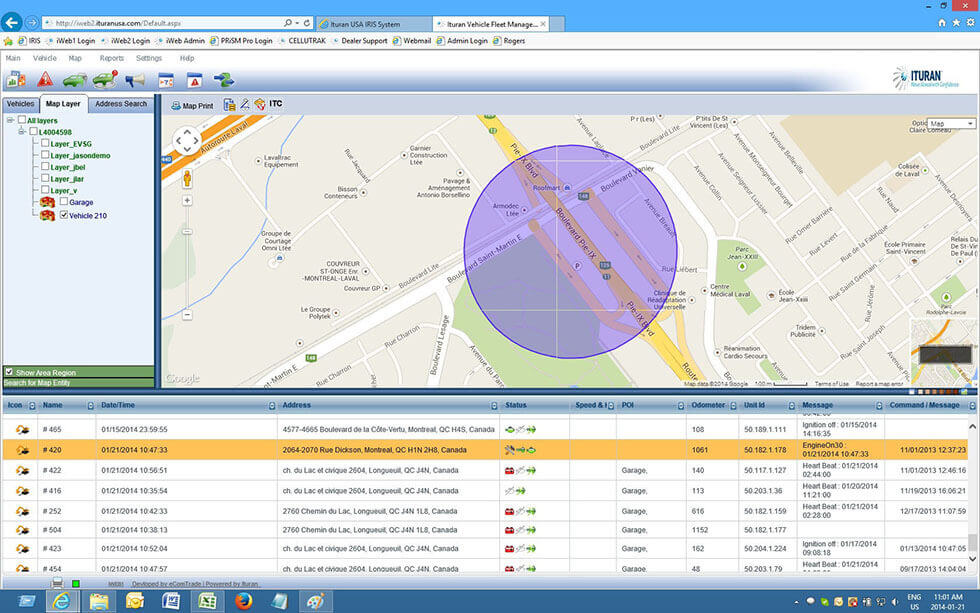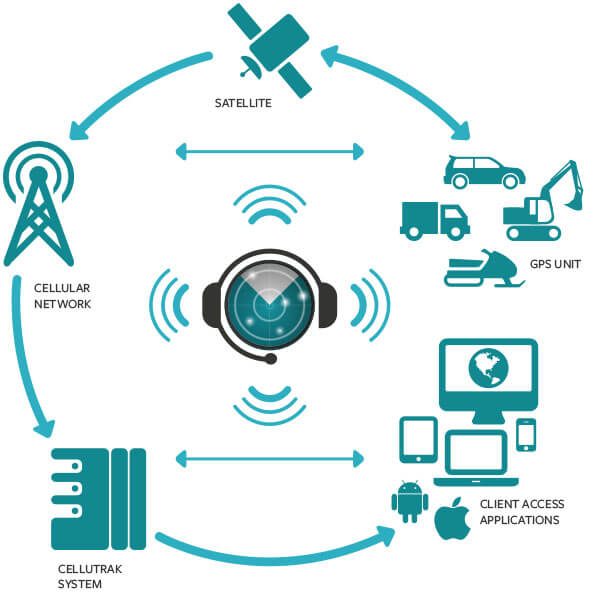What Does Geofencing Mean?
What is geofencing? You have probably seen this term as a feature in numerous applications, heard people speak about it, or read about it in an article. Geofencing or geo-fencing refers to tracking software that utilizes Global Positioning Systems (GPS) or radio frequency identification (RFID) to create a virtual boundary or perimeter around a particular region. This virtual barrier is referred to as a geofence, and it can be as big as you want.
With geofence tools and applications, administrators are notified when physical objects or mobile devices exit or enter the geofenced locations. These notifications can be in the form of emails, text messages, or even phone calls.
What Is Geofencing Used For?
For many years, companies in various industries have used geofencing technology to serve different purposes. First, it gives businesses with fleets better visibility. Using GPS tracking technology, the movements of a company's vehicles can be monitored. When geofence software is included, managers get notifications when assets enter or leave geofenced regions.
If a vehicle leaves the geofenced area, the manager contacts the driver to determine why they have moved out of the work zones. This way, businesses can improve productivity by ensuring that drivers are where they are supposed to be and deliver products to customers on time.
Another vital function of geofencing is to track stolen vehicles. Geofencing, as we had explained, sets up a virtual barrier around a physical area. The target vehicle is then assigned a specific area of operation. When the driver goes beyond the barrier, a notification is sent to the administrator, and appropriate action is taken.
Geofencing Technology
Geofencing involves creating a virtual perimeter around a specific geographical area using a GPS - powered application or web-based software.
It's similar to drawing a circle around a place on a physical map. When the target object enters or exits the geofencing network, administrators are alerted. In fleet management, geofencing security enables companies to track their vehicles when stolen and driven out of the designated areas.
How To Set Up Geofencing
Many people do not know how to geofence a location. Fortunately, setting up a geofence zone is actually one of the easiest things to do. Geofencing technology works with the location services provided on any mobile phone or computer that has internet access. The first way to geofence is the creation of a radius around a specific area.
Keep in mind that most areas that individuals or businesses want to create a geofence around are not usually circular, so creating a radius may not give an accurate boundary. The solution is using polygon mapping, where a virtual barrier is set around the company premises.
You can also create corridor geofences if your fleets include trucks that travel long distances. As the name suggests, you create a geofence along a highway that your trucks use. Fleet managers can make corridor geofences wider so they don't receive notifications every time a driver goes to a gas station or parks somewhere to rest. If there are multiple geofences that need to be created, you can also import a list of locations into the system.

Cellutrak's geozone feature: create custom geozones and get notified when your vehicle enters or leaves the area.
Geofencing In Canada Today
There are hundreds of companies that use geofencing. Here are some industries that use geofencing in Canada:
- Construction: Construction companies normally have employees working in various locations.
- Fleet Management: Businesses with fleets face any challenges associated with the management of their commercial vehicles. A fleet manager gets a notification when a vehicle crosses a boundary.
- Smart devices: An example is an air conditioner that switches itself on when you are a few metres from your home.
- Advertising: It enables businesses to create customized location-based ads. Potential customers are notified when they enter the geofence zones created by these businesses.
- Senior living facilities: Geofences are used to ensure that residents do not go to a restricted area.
Geofence Equipment Tracking
Geofencing makes asset management a breeze. We understand that equipment tracking plays an essential role in improving the efficiency of your fleets. After setting up a geofence zone, you can keep track of your equipment from anywhere.
Geofencing technology allows one to receive alerts when equipment leaves or enters a specific zone, create restriction areas for particular equipment, and monitor the locations of equipment.
Geofence Vehicle Tracking
Geofence vehicle tracking can be done using our free mobile application or the web-based app. Vehicle theft is one of the biggest challenges facing companies with fleets. When a vehicle is stolen, the reaction time makes all the difference.
Setting up geofences can alert you on day-to-day activities, keeping your fleet on track. When the police have access to information on a vehicle's whereabouts, the chances of recovering it are high.
With our complete vehicle asset tracker, you can create geofences and remotely monitor assets in the field. Cellutrak is dedicated to improving operational efficiencies and equipment availability. Contact us today to discuss using geofencing to manage your fleets.



